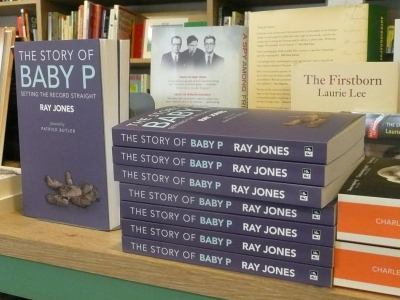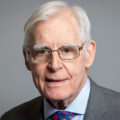
If any good is to come out of the Baby P case, it’s that social workers are beginning to stand up for their profession. That is the belief of Professor Ray Jones, who spent years researching the 2008 tragedy for his new book: The story of Baby P: Setting the record straight. It explores the social, cultural and political storm that surrounded the case.
Jones, who is professor of social work at Kingston University, says social workers have “individually and collectively” started to stand up and speak strongly for their profession following the media furore that erupted after Peter Connelly’s death.
This is evident in the emergence of a number of television programmes on adoption and adult social care, Jones says.
“What we have now are social workers, and sometimes their employing agencies, actually willing to get out there and talk about the realities of social work, its successes but also its complexities,” he says. “There wasn’t much of that happening before 2008.”
Jones became a key commentator on the Baby P case after news broke that Peter’s mother, her boyfriend and his brother had been found guilty of causing or allowing the toddler’s death. At a time when “very few voices” were being heard, Jones found himself drawn on more and more to provide comment on the case and the realities of child protection.
After four years of tracking the story, Jones decided to write his book, which explores the serious case review reports, the way the story was shaped by the press and the impact of media and political behaviour on the individuals involved.
He spoke to Community Care about his difficulties in getting the book published, the outcome of the recent phone hacking trial and the de-stabilisation of the UK’s child protection system.
Q. The Story of Baby P has arrived – how long did it take to get here?
A. “I wrote the book in three months in summer 2012 and then sent it to a number of publishing houses, all of whom rejected it. The comment I got back from one publisher was that it was very controversial and therefore they didn’t think they could take it.
It then took me a year to get a publisher who would take it. In the end, Policy Press decided they would publish it, but by that time we had run into the hacking trial. There was a delay, following legal advice to the publisher, that it shouldn’t be published while the trial was underway. So, it’s effectively been waiting almost two years to be published.”
Q. Now it’s on the shelves, what are you hoping the reaction will be?
A. “I would hope the reaction will be that this is an appropriate and necessary corrective to the story as it was being shaped by, in particular, the Sun newspaper, and that it injects both some balance and some measure back into the story.
“Secondly, I hope that some people will be genuinely horrified that this was how the story was shaped and these are the consequences. But, there is the possibility of some bite-back from the tabloids and from the public.
“The tabloids will possibly continue to try and reinforce the story as they chose to tell it first.”
Q. The media coverage of Baby P’s death is central to your book. What impact did it have on child protection?
A. “The child protection system has been pushed to breaking point. In some places beyond breaking point because of the tremendous pressure that now exists within it.
“Not surprisingly, there is now difficulty recruiting and retaining social workers to work in child protection, and in recruiting and retaining paediatricians to work within that field. We have a system that in some areas has very little stability and that doesn’t make for a safe child protection service.
“The government is about to make it worse by making it more fragmented, by placing child protection in the market place and allowing private sector and for-profit organisations to come in and provide their services. This will further erode stability and it will further erode local partnership working across agencies, which is essential in child protection.”
Q. Is the media’s treatment of Baby P’s story unique or will we see it happen again?
A. “I don’t think it is unique, I think it is exceptional. In two weeks’ time it will be the seventh anniversary of Peter’s death and here we are still talking about Baby P. Whenever there is any news story about child protection it is often linked back to Baby P.
“It is exceptional in the sense that it has had a very long run and it has been told very intensively. It is not unique because there are other children who attract media attention – Daniel Pelka, Hamzah Kahn, Khyra Ishaq etc.
“Who knows what terrible tragedy the media is going to give attention to. It seems to me it will just depend on what other news happens to be around at the time and whether this is going to fill the pages that the papers want to fill.”
Q. To what extent was the case driven by political agenda?
A. “The case was driven by an agenda that was largely set by the press, and that was enhanced by Mr Cameron making a political issue out of it. The Conservative party attacked Mr Brown as Prime Minister and Haringey as a Labour council.
“The press were running the story demanding sackings, Mr Cameron got on board with that and also demanded sackings. With the attention taken away from the police and the health service, it became almost exclusively focused on the social workers and their managers. It was the same type of coming together that we have heard about in Leveson and the hacking trial of the press and politicians generating how a story is shaped and pursued.”
Q. What’s your response to the outcome of Leveson and the Hacking trial?
A. “My response is that I am very pleased that it was held and that it properly exposed some of the behaviours of the media. It also painted the picture of those networks of power involving the press and politicians and with some engagement from the police as well. “All of those dynamics were engrained in the shaping, telling and pursuit of the Baby P story. The Hacking trial has found some editors and journalists guilty of criminal offences but the trial showed that this behaviour seems to have been endemic within parts of the tabloid press in particular and needed to be exposed and it has been exposed.”
Q. Finally, what are the lessons to be learnt from the case of Baby P?
“One lesson for us as social workers is to be wary of accepting how we are presented in the media. One of the concerns around the Baby P tabloid story was that social workers came to believe that this was the right story and what actually happened.
“Social workers need to be more sceptical in terms of how they read about their colleagues and the judgements they then make.
“Secondly, social workers need to be collectively strong as a profession in terms of making sure that the realities of what they do and the work that they undertake are placed before the public. We’ve not been as strong at that as we could be.
“Thirdly, if the media sets up a story in a way that they set this up, with a degree of vindictiveness that generated a threat of violence towards individuals working within child protection, then it is not surprising that it is going to be more difficult to get people to do that work. I think there is some reflection that the tabloid press in particular and politicians need to do in terms of understanding how damaging they can be to finely tuned services like child protection. Undermining these services leaves children more vulnerable.”




 Bournemouth, Christchurch and Poole
Bournemouth, Christchurch and Poole  Hampshire County Council
Hampshire County Council  Lincolnshire County Council
Lincolnshire County Council  Norfolk County Council
Norfolk County Council  Northamptonshire Children’s Trust
Northamptonshire Children’s Trust  South Gloucestershire Council
South Gloucestershire Council  Wiltshire Council
Wiltshire Council  Wokingham Borough Council
Wokingham Borough Council  Children and young people with SEND are ‘valued and prioritised’ in Wiltshire, find inspectors
Children and young people with SEND are ‘valued and prioritised’ in Wiltshire, find inspectors  How specialist refugee teams benefit young people and social workers
How specialist refugee teams benefit young people and social workers  Podcast: returning to social work after becoming a first-time parent
Podcast: returning to social work after becoming a first-time parent  Podcast: would you work for an inadequate-rated service?
Podcast: would you work for an inadequate-rated service?  Family help: one local authority’s experience of the model
Family help: one local authority’s experience of the model  Workforce Insights – showcasing a selection of the sector’s top recruiters
Workforce Insights – showcasing a selection of the sector’s top recruiters 

 Facebook
Facebook X
X LinkedIn
LinkedIn Instagram
Instagram
Comments are closed.